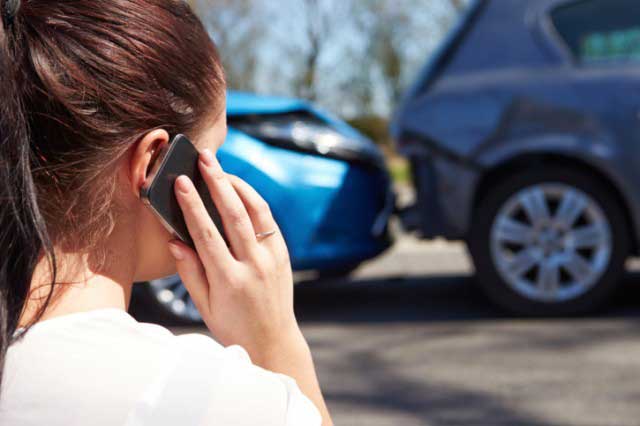Common Vehicle Accident Injuries

What are the Most Common Vehicle Accident Injuries?
A look at soft tissue injuries and other common kinds of vehicle accident injuries suffered by drivers and passengers.
According to the National Highway Traffic Safety Administration (NHTSA), more than three million people are injured each year in vehicle accidents across the country. The different injuries resulting from a car accident can be as varied as the individual circumstances of each collision, but there are some types of injuries that are more common than others.
Some vehicle accident injuries may resolve within a matter of days without any medical treatment at all. More serious injuries might become permanent and result in some level of physical disability.
The type and severity of injuries suffered by drivers and passengers involved in a car accident depend on factors that include:
- Was the person wearing a seat belt?
- Did the person’s car get hit from the rear, side or front?
- Was the occupant facing straight ahead in the seat? Or was the person’s head or body turned in a certain direction?
- Was it a low-speed collision or a high-speed crash?
- Did the car have airbags?
There are two broad categories of vehicle accident injuries: (1) impact injuries, and (2) penetrating injuries.
Impact injuries are typically caused when part of the person’s body hits some part of the interior of the car. Often this can be a knee hitting a dashboard or the head hitting the seat rest or the side window. Penetrating injuries are typically cuts and scrapes. Shattering glass or loose objects flying inside the car on impact often cause these types of injuries.
Soft Tissue Injuries and Car Accidents
A soft tissue injury is a damage to the body’s connective tissue, which means muscles, ligaments, and tendons. This is the most common type of injury resulting from a car accident. Soft tissue injuries can take many forms.
A “whiplash” type injury to the neck and upper back is a form of soft tissue injury. In that type of injury, the muscles and ligaments are stretched due to sudden movements imposed on the head and neck in the collision. These same mechanisms and forces can cause soft tissue injuries in other areas of the body such as the back. Car accidents often cause mid-back and low-back muscle sprains and sometimes cause more serious back injuries because of the impact force against the spine.
Scrapes and Cuts
In a car collision, any loose objects inside the car immediately become projectiles thrown about the car’s interior. This includes cell phones, coffee mugs, eyeglasses, purses, books, dash-mounted GPS systems, etc. If any of these items hit your body, they can easily cut your skin or cause other injuries.
Sometimes these scrapes and cuts are relatively minor and require no medical treatment. More serious injuries can result in loss of blood and may require stitches.
Cuts or scrapes can also result if your airbag deploys in the collision.
Head Injuries and Car Accidents
Head injuries can take a number of forms, some relatively minor and others quite severe. A car’s unexpected stop or change in direction often causes the heads of the car occupants to experience sudden and unnatural movements. This can cause muscle strains in the neck and back (as discussed above). But the head itself can also be injured. Impact with a side window or steering wheel can cause scrapes and bruises to the head or even deeper lacerations. More severe collision impacts can cause a closed head injury. In that situation, the fluid and tissue inside the skull are damaged because of the sudden movement or impact of the head. Less severe closed-head injuries often result in concussions, while the most severe impacts can cause brain damage.
Chest Injuries
Chest injuries are also common vehicle accident injuries. These injuries typically take the form of contusions or bruises but can be more severe, such as broken ribs or internal injuries. Drivers often experience chest injuries because of their position behind the steering wheel, which allows very little freedom of movement before the chest collides with the steering wheel. If a person’s body is thrown forward in a collision, even though it might not impact the steering wheel or dashboard, the chest area will still experience a high level of force against the shoulder harness or seat belt, which can cause severe bruising.
Arm and Leg Injuries
The same forces that unexpectedly throw a person’s head about in car collisions act similarly on arms and legs. If your car suffers a side impact, your arms and legs might be thrown hard against the door. While positioned as a passenger in a car, your legs typically have very little room for movement. Car accidents often cause an occupant’s knees to hit the dashboard or seats in front of them. Depending on the nature of the collision, injuries to your arms and legs might be mere bruises or scrapes, but sprains and even breaks can occur.
Keep in mind that some injuries are not readily apparent following a car accident. Depending on the nature of the injury, it may take days, weeks, or even months for symptoms to appear. So if you are in a car accident, it is best to seek medical treatment for even the slightest discomfort or early indication of injury.
Article originally from NOLO.com
If you or someone you know was injured in a recent car accident, we welcome you to contact us to see about your treatment options
216-220-5775



